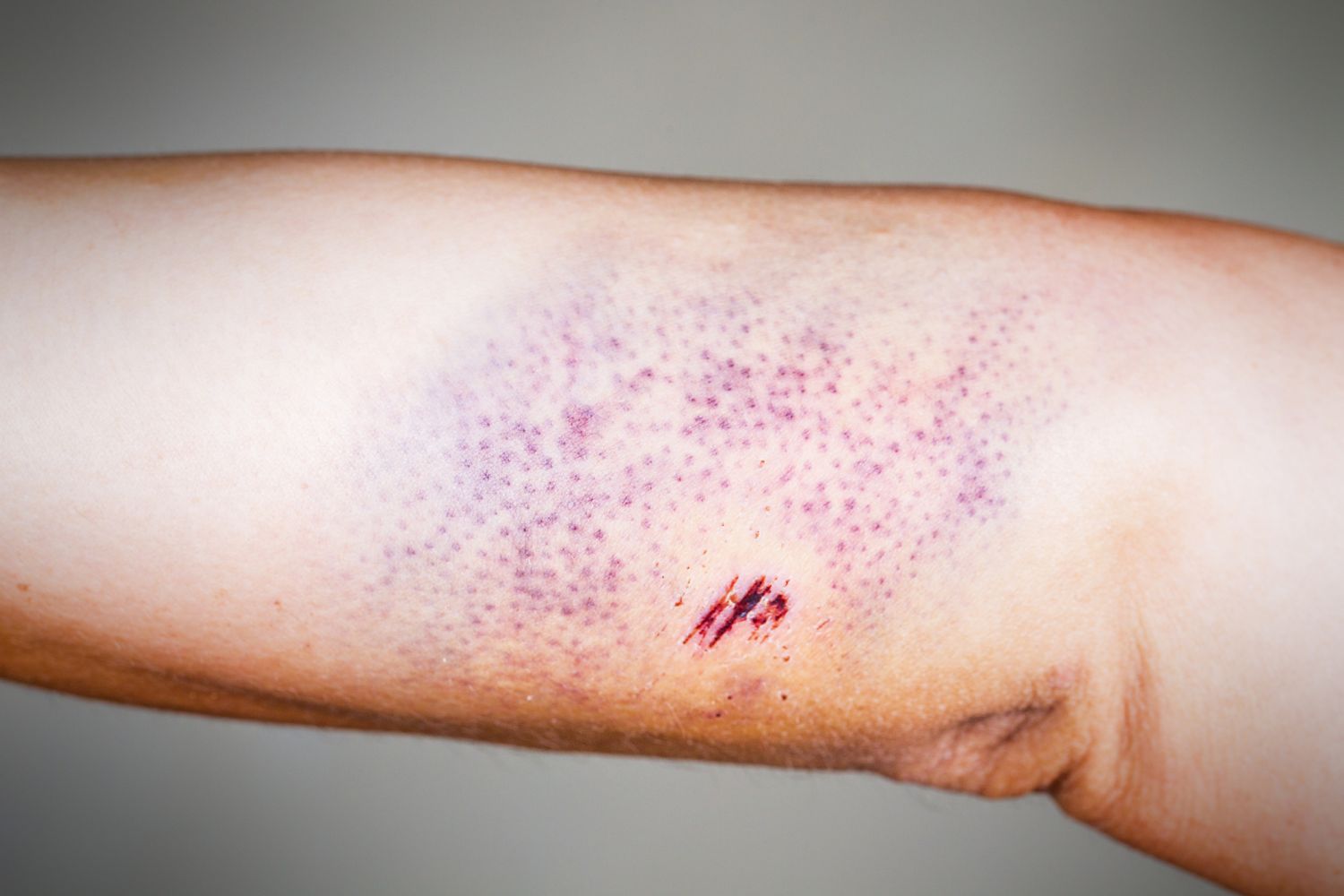They look like a rash: But the small red dots on the skin have nothing to do with dermatosis. What are petechiae, where do they come from and are they dangerous?
Petechiae are a form of purpura: bleeding of the fine capillary vessels, which is expressed as small red spots on the skin surface. The mucous membranes can also be affected. Petechiae can have a variety of causes, such as a bleeding disorder or mechanical trauma. Most petechiae are harmless, but there can be dangerous diseases behind them. They occur mainly on the arms and legs, but also occur in other parts of the body.
Article content at a glance:
Blood count: important values and what they mean
–
–
–
Recognizing petechiae: these are the characteristics
Small red spots on the skin are what most people initially mistake for a rash or other skin condition. At first glance, it is not easy to tell what the reddening of the skin means. But if you take a closer look, petechiae can be easily distinguished from other skin phenomena.
This is how petechiae can be recognized:
- Pinhead-sized dots on the skin
- Usually occur in clusters
- No itching
- No pain
- Color change from reddish to violet-bluish to a dark red-brownish hue – similar to a bruise
The change in color of the petechial hemorrhage is caused by the fact that the body breaks down the red blood cells (erythrocytes) and splits the blood pigment hemoglobin.
A simple test helps to differentiate petechiae from a skin disease: press a glass spatula or a transparent drinking glass onto the affected area. A rash fades due to the pressure, the petechiae remain clearly visible: Small amounts of blood leak from the capillaries and collect in the skin – the leaked blood cannot be pushed away. In the case of a rash, the blood is still in the vessels and the reddening disappears with pressure.
Petechiae: What Are Common Causes?
Petechiae are a symptom – there can be many triggers behind the punctiform hemorrhages.
Petechiae can result from small mechanical vascular injuries, for example from carrying a heavy bag, when the belt straps cut into the skin and exert local pressure. An ill-fitting bra strap can also cause bleeding. Briefly increased pressure in the blood vessels can lead to petechiae, for example due to strong coughing, frequent vomiting or after childbirth. In forensic medicine, petechiae in the area of the eyes serve as an indication of strangulation.
Platelet Deficiency: Thrombocytopenia as the cause
Petechiae occur primarily in the course of blood clotting disorders. If there are too few platelets (thrombocytes) in the blood, this can lead to the bleeding similar to a flea sting because the vessels are no longer adequately sealed. Small oozing bleeding into the surrounding tissue is then possible without injury. The tendency to bleed is increased. Haematomas often occur after minimal bumps and injuries – nose and gum bleeding are also a common symptom of thrombocytopenia. Persistent menstrual bleeding may occur in women. This can be triggered by diseases of the bone marrow.
Causes of thrombocytopenia can be:
-
leukemia: In the course of white blood cancer, too many leukocytes (white blood cells) are produced, but too few platelets and erythrocytes (red blood cells).
-
Malignant lymphomas: A cancer of the lymphatic system such as Hodgkin’s disease can also cause thrombocytopenia.
-
Multiples Myeloma (Plastozytoma): In this form of cancer, the bone marrow is affected, and as a result, the production of platelets may decrease.
-
Chemotherapy and radiation: As part of cancer therapy, not only the cancer cells but also the blood-forming stem cells are killed so that the body no longer produces blood cells.
-
Immune thrombocytopenia (Werlhof’s disease): Platelets have a shorter lifespan because the body makes antibodies against them.
Medicines can also trigger petechiae:
- Nonsteroidal anti-inflammatory drugs (NSAIDs) such as acetylsalicylic acid (ASA)
- Antibiotics (Sulfonamide, Penicillin, Nitrofurane)
- Warfarin and heparin
- Antiepileptics
- Antidepressants
Injuries and inflammation of the vessels
With an inflammation of the blood vessels (vasculitis), especially of the fine vessels, petechiae can occur. As a rule, vasculitis is an autoimmune disease in which the blood vessels are attacked by the immune system.
Henoch-Schönlein purpura is a form of vasculitis that occurs particularly in (young) children. It usually occurs after an infection. Antibodies are deposited on the vessel walls and provoke an immune reaction that attacks the vessels. The result are petechiae.
Age-related signs of wear and tear and acquired vascular damage, for example from diabetes mellitus, can also cause petechiae.
Infectious diseases as a trigger of petechiae
Some infectious diseases are possible causes of petechiae. They are a common symptom of tropical diseases. If petechiae occur after a stay abroad, particular caution is required and the attending physician should be informed about the travel location in order to be able to make a reliable diagnosis.
Safety when traveling: there is a risk of infection here
–
–
–
Petechiae: This is how the doctor makes the diagnosis
First, the doctor will examine the affected area carefully to make sure that it is petechiae and not a skin disease that is causing the redness. A complete blood count and other laboratory tests can provide clues as to the cause. The urine can also be examined for clarification.
Questions about other symptoms, medication taken, physical strain and injuries, as well as recent long-distance travel are part of a comprehensive diagnosis: If the doctor finds the cause of the small hemorrhages, he can initiate suitable treatment. This depends on the cause, not the symptom.
Petechiae: when to see a doctor?
If petechiae occur, a doctor should be consulted in any case. Although the small red dots on the skin are usually harmless, it can also be caused by a disease that requires treatment.
The first point of contact can be the family doctor, but also a dermatologist. If there are abnormalities in the hematocrit value, i.e. in the composition of the solid components of the blood, a hematologist can take over the further treatment and examination.
– .


